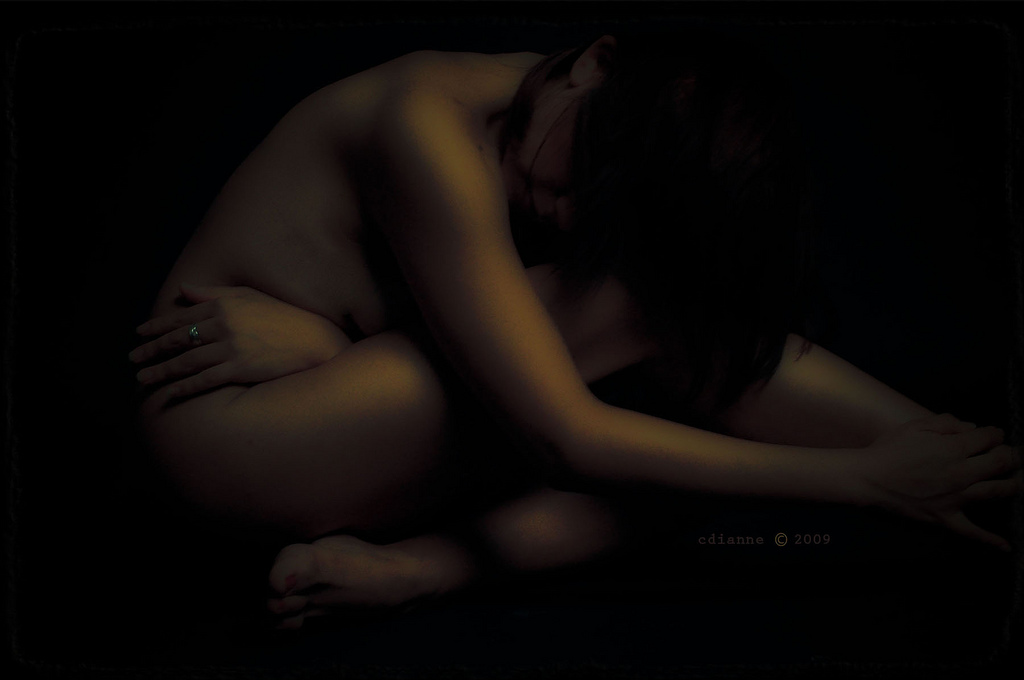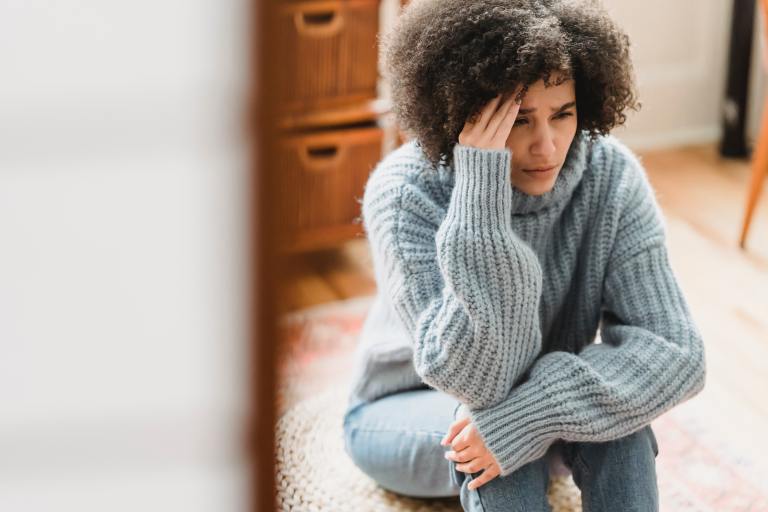On Cutting And The Scars Nobody Else Can See
On the surface it sounds deranged, disturbing, and dark. But underneath that, beneath the act and the inflicted cut lies an untold story.
By Jamie Berube
When I was 12 years old, I was admitted into a psychiatric hospital for a night, and placed into a room with another girl. When the nurse showed me to my bed, it was close to 4 in the morning and she was asleep. Being 12 years old at the time, the sight of a stranger’s body underneath a thin fleece blanket on a tiny twin bed constructed of wood in what looked like a prison cell terrified me. I wanted to go home. I wanted my mom to tuck me into my own bed and for the nightmare of that experience to be over and erased from my memory. But the thought of that made me sad, too. For I would simply be walking from one nightmare into another — the only difference being I was familiar with the nightmare at home. And when you’re a kid you typically assume that what is familiar is safer than what is not. My step-dad had the police take me in that night after he convinced them I was a harm to myself when I called 911 during one of his drunken episodes.
I learned a lot from the experience. And whether I wanted to learn these things or not didn’t matter.
I walked into the room assigned to me and sat on edge of my bed. I wondered how I could make the cold, hard surface comfortable with a scratchy fleece blanket and pillow. The tears that I had cried in the hours prior started up again and awoke my roommate.
“You okay?” A tired voice echoed off the sterile walls. She sounded older than me. I was immediately embarrassed that she had heard me crying.
“Um…yeah… I’m sorry,” I stuttered.
“What’s your name?” She peeled the blanket away from her face and looked up at me. Her hair was yellow like a stick of Juicy Fruit bubble gum, and her brown eyes were puffy with sleep. She was thin and her face seemed aged well beyond her teenage years.
“Jamie…” I answered.
“Hi Jamie. What are you in for?” she asked stoically as she sat up in bed. I didn’t want to talk to her. But there was something kind about her way of conversation.
“Well I didn’t do anything wrong…I mean, I’m not here because I’m crazy,” I said between sniffles. I went on to explain what had happened the night before.
“He was drunk and breaking my stuff and I was scared so I called the cops but when they came he told them I was nuts and they brought me here…so…yeah. What about you?” I slowly regained composure. The talking helped.
She held out her arm and said, “this…”
I gasped in shock. Half of her arm was covered with bloody dashes and scars.
“Guidance counselor at school saw them. I did it to myself. They 51/50’ed me.”
My eyes grew wide and I didn’t quite understand.
“I’m a cutter,” she continued, “you know what that is?”
At 12 years old, no, I did not know what a “cutter” was. I knew that some people hurt themselves on purpose every now and then but I didn’t know it was a disorder.
That experience sitting on a twin bed at 4:30 in the morning in a psych ward with a girl I’d never met was my first close encounter with someone who struggled with self-harm. And later, in college, I had a girlfriend who came out about her cutting to me late one night after she’d had a “relapse.” She pulled back the long sleeves of her shirt to show me her scars. The amount was indiscernible and the sight of it was heart-breaking.
I comforted her and told her something I had maybe only told to one or two others. And that was that around the age of 13 or 14, a couple years after that night in the ward, I hurt myself on purpose, too. This lasted for about three or four months, at the height of my step-dad’s abuse and alcoholism. I won’t ever forget the night I sat on my bedroom floor with a razor and cut my foot so badly it bled all over the carpet and I had to scrub the stain and keep it hidden from my mother for two days to get it out. That was the last time I injured myself on purpose. I have never talked about this to anyone in detail, not because I like to keep secrets but because put bluntly, self-harm is one of the most misunderstood and stigmatized issues in the realm of mental health. And it’s easy to see why. “Cutting” is typically a closeted behavior that is uncomfortable to talk about and impossible for anyone with no knowledge or understanding of it to really “get.”
On the surface it sounds deranged, disturbing, and dark. But underneath that, beneath the act and the inflicted cut lies an untold story.
The first time I harmed myself was with a safety pin. I was emotionally numb and desperate for an escape. I wanted to feel something that would distract my attention from the swirl of pain that had swallowed me whole. There was nothing I could do to run away from the abuse or the hurt, or so I thought. I wanted how I felt inwardly to be reflected outwardly. Crying offered no relief and I was defenseless against the taunts of a man under the influence of an entire case of Bud Light. So one night after my stepfather had thrown a frying pan full of grease onto my bed and starting yelling at me and calling me names because I had left the bathroom light on after using it, I sat down at my bedside and broke skin with the head of a safety pin I found on my mother’s dresser. I felt a rush of adrenaline course through my veins and the sensation of something beyond the emotional numbness that so consumed me. This made me want to do it again. So I did. This lasted for a couple of months.
I was not suicidal or having suicidal thoughts when I hurt myself. And that is one of the most difficult truths about the problem that people don’t understand. “Cutters” typically don’t cut themselves with the intention of killing themselves. They do it for, among many reasons, the feeling of control, escape, adrenaline, and the displacement of pain from the emotional level to the physical.
For me, it was a release of the intense, pent-up pressure and depression and rage I felt. It momentarily transported me away from the fogginess of the pain and the misery of what I had to come home to each night after school. It became an adverse coping mechanism. And not one that I felt I could talk about with anybody, even after I stopped. I was afraid of being branded as a “crazy” or as “another emo teen” trying to get attention. So I kept quiet, like most people who struggle with self-harm are prone to do.
It wasn’t until I had cut myself to the point of non-stop bleeding for hours and hours and having to scramble to hide it that I realized I had a serious problem. Therapy wasn’t an option and I didn’t feel comfortable confiding in anyone about it for help so I made the choice to quit on my own. The fact that what I was doing was not solving my problems, only giving them more power, was my driving force in quitting. So I threw out the safety pins and other random sharp objects I had kept hidden in a jewelry box and decided to be done with it before it got worse.
It’s easier said than done, I know, but it’s doable.
If you have read these words and felt you can relate or have thought “that’s me. That’s my story, too,” my hope is that first, you know you are not alone. And second, that you are not crazy, defective or damaged. Furthermore, I hope that you know that you too can overcome and heal. You are worth it — all and every part of you, the good, bad, and broken. You are worth more than your pain. And you deserve to live a life that celebrates that.
I will never forget the girl who I shared a room with at a psych ward many years ago. Though deeply troubled, she was a friend to me in an extremely dark, confusing, and painful circumstance. And she was honest about her story and struggle with cutting. Looking back now I can see how her transparency humanized the “concept” of self-harm and made it something that was very real and tangible and saddening — not something that should be ignored, diminished, or stigmatized in its place under the rug with the other “taboo” mental health topics.
Because beneath each cut, there is a story. And beneath each story there is a person living out that story — a person who deserves to know that they are worthy despite their pain, self-inflicted or not — and that there is hope. I wish there was a magic cure or an easy remedy. If there was I would have told my friend in college what she needed to do in order to stop. But healing is not black and white. Recovery is not linear. It will look different for everybody, with the end goal being the same: to learn how to healthfully cope with what we can’t control, and to love ourselves and find beauty and strength in who we are within the story that lies behind the blade and beneath the cut. ![]()





